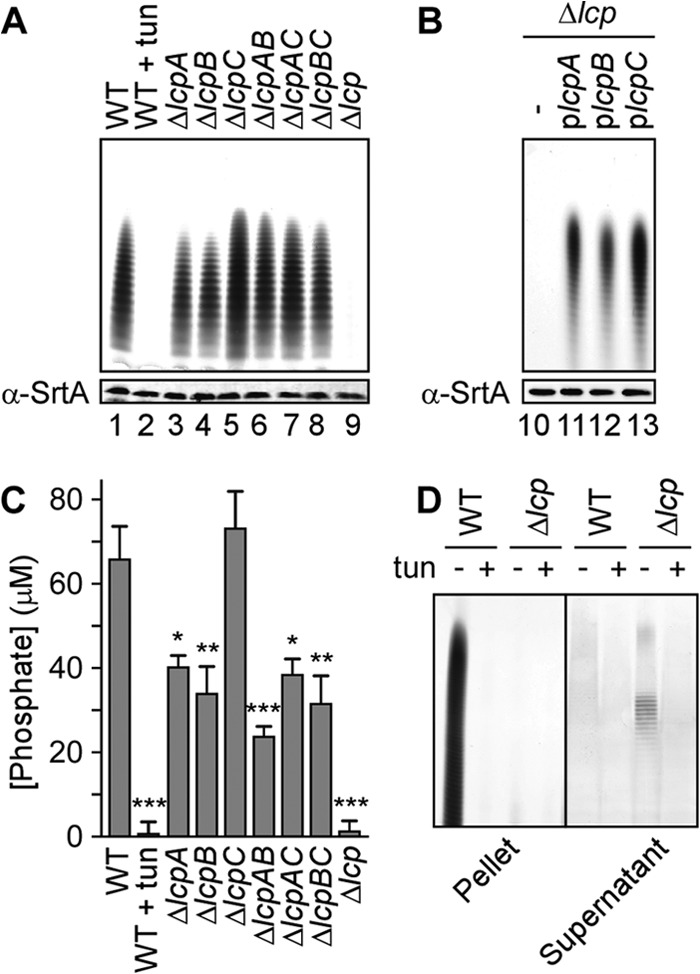Fig 1.

Δlcp mutant cells lack cell-associated wall teichoic acid. (A and B) Alcian blue- and silver-stained acrylamide gels of cell wall-associated WTA. (A) WTA was extracted from the S. aureus MSSA 1112 wild type (WT) grown without (lane 1) or with (lane 2) tunicamycin and from single mutant strains (the ΔlcpA, ΔlcpB, and ΔlcpC mutants), double mutant strains (the ΔlcpAB, ΔlcpAC, and ΔlcpBC mutants), and a triple mutant strain (the Δlcp mutant) (lanes 3 to 9, respectively). (B) WTA was extracted from the triple mutant strain (the Δlcp mutant) carrying an empty vector (lane 10) or complementing plasmid plcpA, plcpB, or plcpC (lanes 11 to 13, respectively). As a control for the number of staphylococci, cell extracts were immunoblotted with antibodies specific for sortase A. (C) Quantification of phosphate levels in purified peptidoglycan from the strains described for panel A. Average phosphate levels were derived from three independent experiments, and the standard errors of the means were calculated. Statistical significance between the wild type and each group was determined using one-way analysis of variance (ANOVA) with Bonferroni's multiple-comparison test. *, P < 0.05; **, P < 0.01; ***, P < 0.001. (D) Identification of teichoic acid in the supernatant of Δlcp cultures. Wild-type and Δlcp strains were grown in the absence (−) or presence (+) of tunicamycin, and teichoic acids in cell pellets (left) or culture supernatants (right) were resolved by PAGE and visualized by staining with alcian blue and silver.
